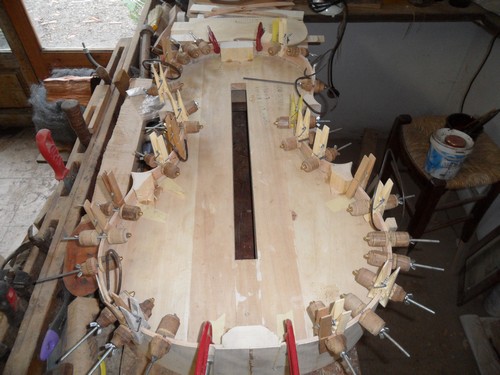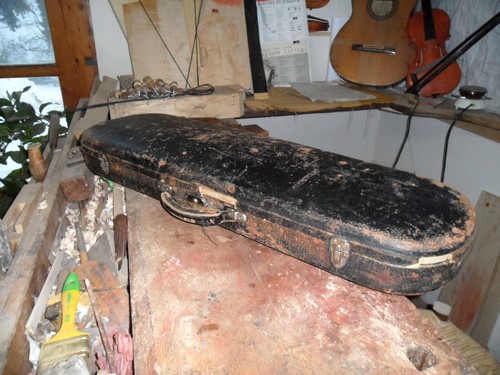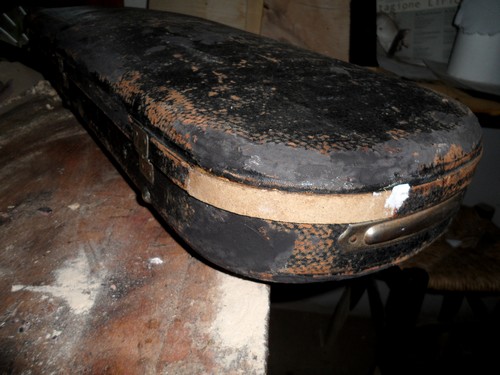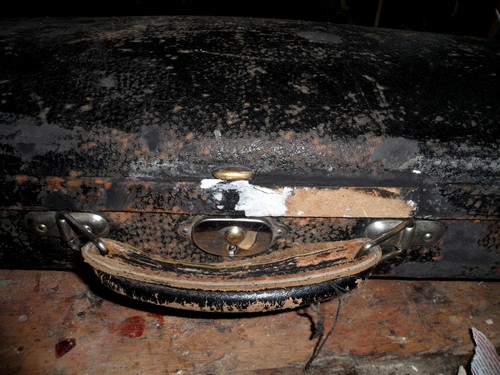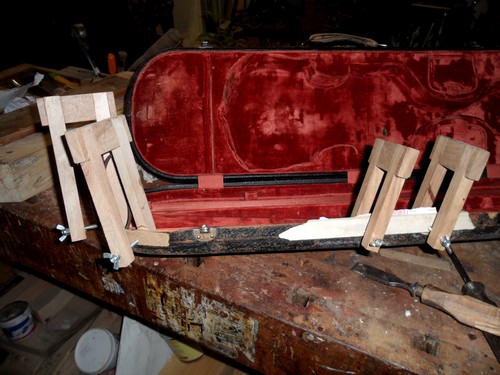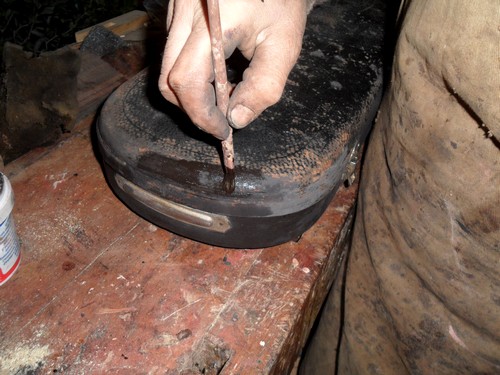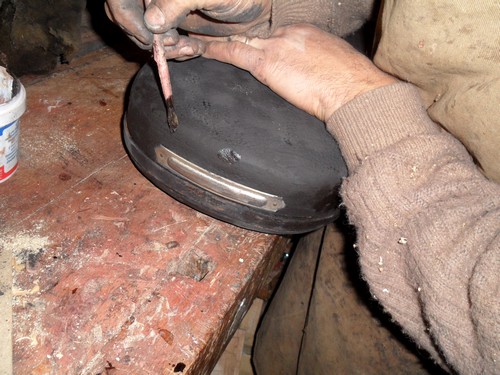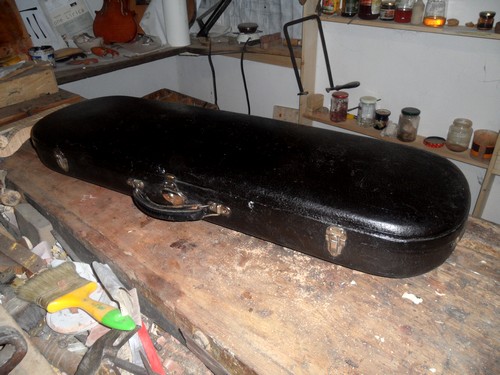
Starting from the positioning of the blocks, formerly of poplar or willow, (here made of spruce), after having carefully positioned and glued them with a few drops of glue on the form, I proceed with the shaping using a narrow blade. I prepare the ribs, usually from maple, levelling them with a planer and finishing with a card scraper, paying attention to the regularity of the thickness. To glue the ribs, I start from the inside of the C-bouts and then move on to the upper and lower ones. I continue the work with the gluing of the linings, starting from the side of the back. The lining used are made of willow and to facilitate the bending I have used the usual heat technique used for the ribs. The tools I used are steel springs and various clamps.
